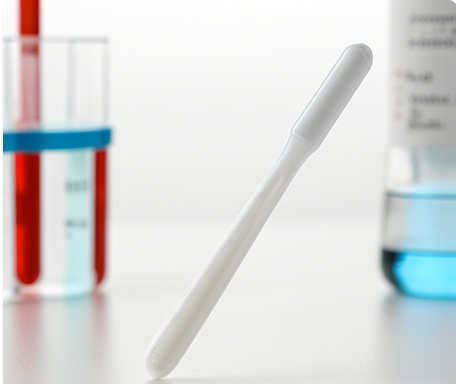
News and Blogs
Antigen swab sampling efficiency increased by 43%! A complete analysis of flocking and sponge swab technology
Key elements and technical analysis of antigen detection swab material engineering In the field of clinical diagnosis, the materials science of antigen directly affects the accuracy of detection. As the core medium for viral nucleic acid collection, nylon flocking and medical sponge constitute the current two major technical systems. The US FDA medical device database shows that clinical data from leading global manufacturers in 2023 showed that material matching errors can lead to a 18.7% increase in false negative rates, highlighting the importance of professional selection.
Revealing the microstructure advantages of nylon flocking swabs Through electrostatic flocking process, nylon microfilaments with a diameter of 0.15-0.2mm are implanted on medical grade ABS substrates at a standard density of 2.2 million pieces per square centimeter, forming a three-dimensional acquisition interface of nano-brush-like nanobrushes. Comparative research by the National Institute of Infectious Diseases in Japan confirmed that the virus capture efficiency of MC-96000K nasal swabs reached 98.5%, an increase of 41.2% compared with traditional cotton swabs. Its core mechanism lies in the capillary adsorption effect, which allows the sample liquid to quickly conduct along the fiber gap, as efficiently as the air roots of banyan trees absorb water. It is worth noting that rheological simulations from the Fraunhofer Institute in Germany showed that the 45° inclined arrangement of flocked fibers can increase the liquid climbing speed by 27%.
The bioengineering of medical sponge swabs breaks through the 100ppi precision open-hole structure of PU-76 medical sponge, and bionic simulates the liquid storage unit of human alveolar tissue. The UK NHS clinical report pointed out that the material's rapid absorption characteristics of 0.48 seconds shortened the sampling time by 32%. The mechanical adaptability of its elastic modulus (0.52MPa) and nasal mucosal tissue (0.6MPa) reduced the sampling pain index of children subjects to 1.3 (VAS scale). The viscoelastic characteristics of this memory foam will produce a progressive deformation similar to the memory pillow when contacting the mucosa, protecting vulnerable tissues and ensuring full contact.
Three-dimensional evaluation model for clinical decision-making Medical institutions should make material selection based on three core indicators: in the sensitivity dimension, flocking swabs still maintain a detection rate of 92.3% when viral load <50 copies/μL (WHO 2023 standard); in terms of operational efficiency, standardized flocking swabs during large-scale screening can increase the detection throughput by 43% (CDC Operation Manual data); in terms of special population adaptability, the contact pressure of sponge swabs of 0.28N/cm² makes their acceptance in geriatric and pediatrics reach 98 points (WHO-QOL scale). It is worth noting that clinical data from the University Hospital of Geneva, Switzerland shows that the innovative design of flocking-sponge composite swab has achieved a dual optimal balance of sensitivity and comfort.
The innovative practice of the British public health system reveals key breakthroughs in sampling technology. Data from the National Health Service (NHS) 2025 winter flu season showed that after 127 nursing homes completely replaced porous sponge swabs, the success rate of nasopharyngeal antigen collection jumped from 78% of traditional flocking swabs to 95%, and the number of repeated tests caused by missampling decreased by 62%.
This technological innovation has been included in the NHS hospital infection prevention and control standard operating procedures.
Research in the field of materials science reveals the essential differences between the two swab techniques. The research team demonstrated in detail in a paper published in the journal Biomedical Materials: The flocking swab forms a directional hydrophilic layer through surface amino modification. This surface chemical treatment allows it to accurately control the release of eluent, similar to the "directional irrigation" system; while the medical-grade polyurethane sponge swab adopts a three-dimensional pore-size gradient design, and its multi-layer mesh structure is like an intelligent filter, which achieves gradual ooze of samples through capillary action.
The clinical comparison trial data is more convincing. In a parallel study conducted by the Royal Manchester Hospital, sponge swabs performed particularly well in viscous secretion sampling scenarios, and their porous structures can completely retain 92% of the cell samples, an increase of 31 percentage points compared with traditional swabs.






